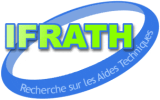Hybrid Brain-Machine Interface to palliate the motor handicap caused by Duchenne muscular dystrophy: a case report
Résumé
We describe a hybrid Brain-Machine Interface (hBMI), designed for improving DMD (Duchenne Muscular Dystro-phy) patients' autonomy. We assess relevance of our hBMI with 2 DMD patients performing the virtual driving task shown in figure 1. To adapt our hBMI to patients motricity, it allows hand movement (real or intentional) detection by processing signals from electroencephalography (EEG), electromyography (EMG), and joysticks. It allows using different applications, by controlling an object (real or virtual) trajectory through movements of right hand, left hand, or both hands simultaneously. Right and left hand movements result in respectively a left and right rotation, whereas both hands movements move the object forward [1], [2]. Figure 1: Karting driving task II. METHOD Patients (men, 20/28 years) realized home-based experiments , using a portable equipment, thanks to a collaboration with Lille University Hospital and CentreHéì ene Borel (Lille, France). As shown in figure 2 (Left) patient is seating in front of a computer displaying the task and recording 12 EEG signals from the primary motor cortex. Figure 2 (Right) shows EMG electrodes location over each hand. Figure 2: (Left): Hybrid BMI experiment overview. (Right): EMG location Patients instruction was to make 2 laps, by making hands movements detected in real time by processing EMG signals in OpenVIBE software [3]. III. RESULTS Figure 3 compares patients performing times (in seconds) to those of 10 healthy subjects performing the same task. Patients performances look quite similar to those of healthy subjects, suggesting that our hBMI is relevant for DMD patients. Moreover, we observe a learning effect between the two laps, expecting improvement with training. Figure 3: Lap times (seconds) for healthy subjects and DMD patients.
| Origine | Fichiers produits par l'(les) auteur(s) |
|---|
Loading...

